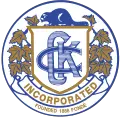Pug History
The Pug is a small, short-muzzled, square-proportioned, and compactly builtBrachycephalicdogbreed from East Asia. The Pug is one of the world’s most recognizable and popular toy breeds. The history of the pug can be traced to China over two thousand years ago. For centuries the pug was kept as a pet by Chinese emperors, and images of them have been found on ancient artifacts. The pug was eventually introduced to Europe in the 1600s and established a following in England. The popularity of the pug and its ancestors greatly diminished during the 1800s, but interest in the breed was renewed once again in the 1990s.
Pug Physical Characteristics
The Pug is a small, medium-to-large sized brachycephalic (flat faced) breed of dog that was originally bred for hunting. They have short legs, and an elongated face with very short muzzles and flat, wrinkled, or folded foreheads. Their noses are large and they usually have droopy eyelids. The pug has a loose skin that is either fawn or black in color. They are very friendly, playful, and outgoing.
Eye Colors
Brown
Nose Colors
Unknown
Coat Colors
Unknown
Height Range
Male Height Range: 12 – 14 inches
Female Height Range: 10 – 12 inches
Weight Range
Male Weight Range: 13 – 20 lbs
Female Weight Range: 13 – 18 lbs
Pug Health
Description of breed health.
Lifespan
12-15 yrs
Pug Health Concerns
Entropion, Legg-Calve-Perthes Disease, Portosystemic Shunt, Pug Dog Encephalitis, Necrotizing Meningoencephalitis, Allergies, Corneal Ulcer
Pug Temperament and Behaviour
The Pug is a playful, cheerful, and outgoing dog. They are mischievous and love to clown around, which can make for an entertaining pet. They are generally very calm, but they can be nervous and high-strung. They get along well with children and other pets, but they can be aggressive towards strange dogs and people.
Pug Activity Requirements
While Pugs are small, short-haired, and compact, they are actually quite active and athletic. Their short bodies are designed for speed, and they absolutely adore playing. While Pugs are not high-energy, they still require regular exercise. A daily walk or a few play sessions is the best way to keep them healthy and happy. They also love being outdoors. Some toys that can help improve dexterity and stimulate their busy brains can be beneficial, too. If you are thinking of getting a Pug, you should be prepared for their energetic personalities. They aren’t a couch potato kind of dog. They need regular physical exercise and mental stimulation.
Miles Per Day
Unknown
Activity Per Day
Unknown
Daily Food
1 cups
Kennel Club Recognition

American Kennel Club
Recognized by the American Kennel Club
Pug is part of the Toy group.
Visit the American Kennel Club website.

The Kennel Club
Recognized by The Kennel Club
Pug is part of the Toy group.
Visit the Kennel Club website.

Australian National Kennel Council
Recognized by the Australian National Kennel Council
Pug is part of the Toy group.
Visit the Australian National Kennel Council website.

Canadian Kennel Club
Recognized by the Canadian Kennel Club
Pug is part of the Toy group.
Visit the Canadian Kennel Club website.
